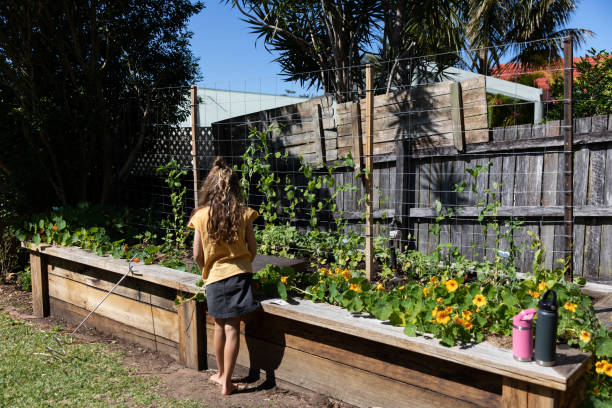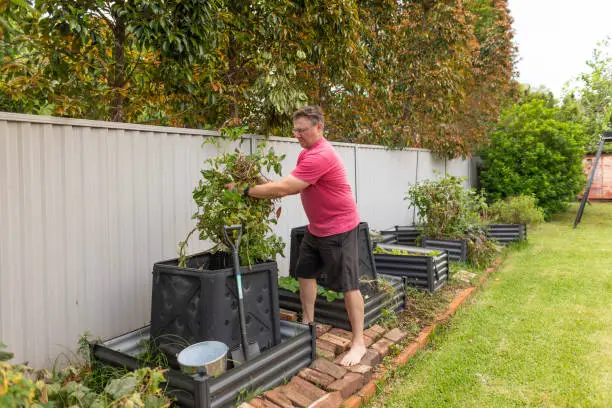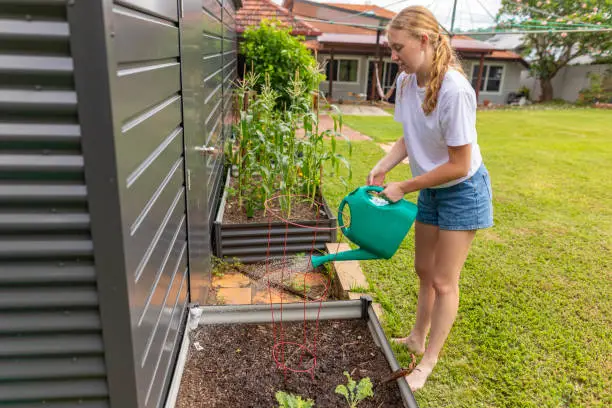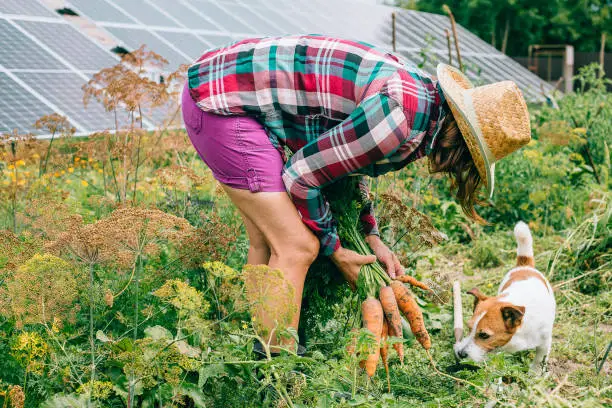For backyard homesteading success, master garden rhythms with seasonal planning.
A backyard homesteading requires more than a love of gardening or a desire for sustainability; it requires learning to read nature and grasp seasonal planning. This project reframes gardens as dynamic ecosystems that thrive under careful maintenance and timely decision-making. Seasonal planning is essential to homestead management, advising us on what to plant, what to grow, and how to secure a year-round crop.

As the winter chill thaws and spring begins, our homesteads awaken, offering the first planting chances. In this period of renewal and preparation, cold-hardy crops shine. Sow lettuce, peas, spinach, and kale right into cold ground. These early garden risers are robust and foretell fresh produce. The warmth-loving tomatoes, peppers, and eggplants need a head start indoors before being transplanted outside after frost.
Spring brings flowers and leaves, speeding up the garden. In the growing season, a succession planting strategy is crucial. Sowing carrots, beets, and fast-growing radishes at intervals ensures a consistent supply meanwhile, the soil warms, ready to transplant those tender indoor seedlings. As the garden grows, cucumbers, squash, and beans, chosen for their warmth tolerance, seeding, growing, and harvesting get more complicated.
Summer shines with long days and mild evenings, boosting garden productivity. Heat-tolerant cultivars are planted most during this season. Sweet corn soars, while tomatoes, peppers, and eggplants expand with flavor in the sun. Despite the abundance, the attentive homesteader plans ahead. Early summer is ideal for planting fall crops like broccoli, cabbage, and kale for a more relaxed harvest.
Autumn’s crisp air whispers through the leaves, shifting the garden’s focus. Harvest and year-long preparation are part of this season. Spring-waking garlic bulbs are planted, while cover crops like clover and rye protect and enhance the soil. The abundance of the garden is not just the food we eat but the soil that will support future growth.
The successful homesteader makes many decisions, from crop rotation to pest management, based on past learning and future harvests. The care and thought put into the garden show the human-earth symbiosis. Learning, adapting, and growing in the garden and inside ourselves is a cycle.
Understanding and respecting the land’s natural cycles is the key to homestead seasonal planning, not strict schedules or detailed blueprints. Recognizing the potential in every seed, promise in every bud, and reward in every harvest. This holistic gardening method supports the soil, plants, and homesteader’s soul, connecting them to the earth and its seasons.
As the year ends, the homestead relaxes while the homesteader plans, dreams, and prepares for the next cycle. The garden may be covered with snow, but the homesteader awaits spring, seeds, and gardens. Backyard homesteading is a never-ending adventure made joyful by this rhythm with nature.
Homesteaders’ Financial Planning: Budgeting and Saving
Backyard homesteading is a journey to self-sufficiency that requires as much financial savvy as a green thumb. From installing garden beds and poultry coops to buying seeds, equipment, and water, turning your backyard into a homestead is expensive. With intelligent planning and frugality, homesteaders can grow a savings garden alongside vegetables and herbs.
Homesteaders’ financial planning begins with separating the fantasy from the dirt. Identifying your homestead goals helps you prioritize spending. Are you after an utterly off-grid existence or just homegrown produce? Because it limits your budget, this distinction lets you prioritize significant investments over nice-to-haves.
After setting homesteading goals, create a budget for launch and operation. Startup expenditures can be high, from buying quality soil to guarding your growing habitat from hungry animals. Seeds, water, greenhouse heating, electricity, and tool and equipment maintenance are operational costs. This budget must also account for weather damage, pest incursions, and crop failures that can derail even the best-laid plans.
Homesteaders can profit from improvisation. Using and reusing materials can save money. Old pallets become garden beds, yogurt containers become seed-starting pots, and kitchen wastes make nutrient-rich compost. This method saves money and promotes sustainability and self-reliance in homesteading.
Another critical method is to start small and grow. Getting lost in the dream of a homestead with every type of fruit, vegetable, and cattle is easy. Overcommitting (or planting) wastes resources and discourages. Start with simple, quick undertakings like a vegetable garden or backyard poultry for eggs. You can learn and adapt without the burden of a significant expenditure.
Patience may be as crucial as crop cultivation. Homesteaders expect abundant crops to fill their meals and cupboards in the first season. Building a productive homestead takes time. Soil quality increases slowly, trees take years to give fruit, and perennials take seasons to establish. To maintain your homestead as it expands, you must prepare financially for the long term and save.
In addition to savings, diversifying your homestead’s output can buffer your finances. Balance plant-based activities with small-scale livestock farming if you have space. From egg and honey sales to breeding stock, chickens, rabbits, and bees can give additional food and revenue. Learning and perfecting preservation canning, drying, fermenting can turn seasonal gluts into year-round food supplies, cutting grocery expenses and supplying products for swap or sale.
Homesteading and local community involvement can also be profitable. Community gardens, seed swaps, and workshops are great opportunities to share resources, learn, and save money. These networks are great for obtaining secondhand tools, free or low-cost resources, and new skills to improve your homestead.
Homesteading’s financial situation requires monitoring the return on investment in produce and quality of life. For many, homesteading is worth it for the richness it brings to their lives the satisfaction of a meal made from ingredients grown with your hands, the joy of watching your homestead thrive, and the peace of living in harmony with nature.
Homesteading in the backyard follows nature’s cycles of investment, growth, harvest, and rejuvenation. It involves dedication to the land and careful expenditure and preparation. As the homesteader learns the rhythms of their land, they know the financial dances of budgeting, saving, and investing to ensure their homestead survives and thrives.






Leave a Reply